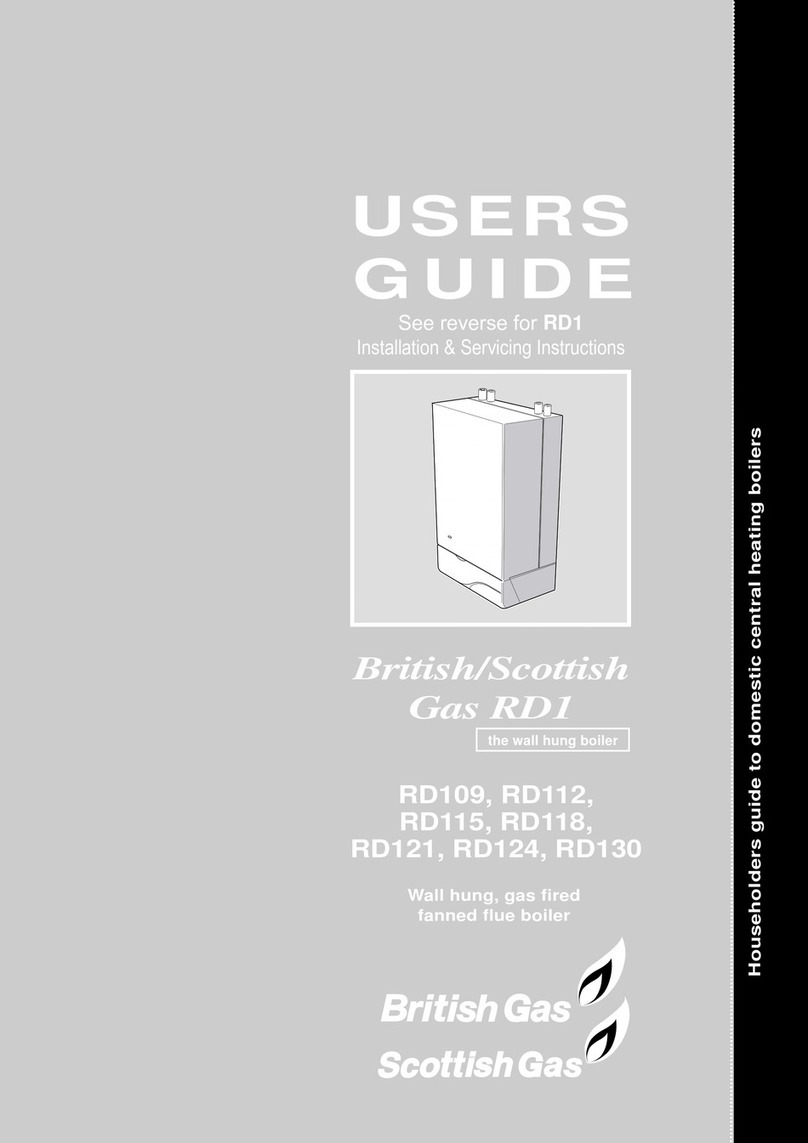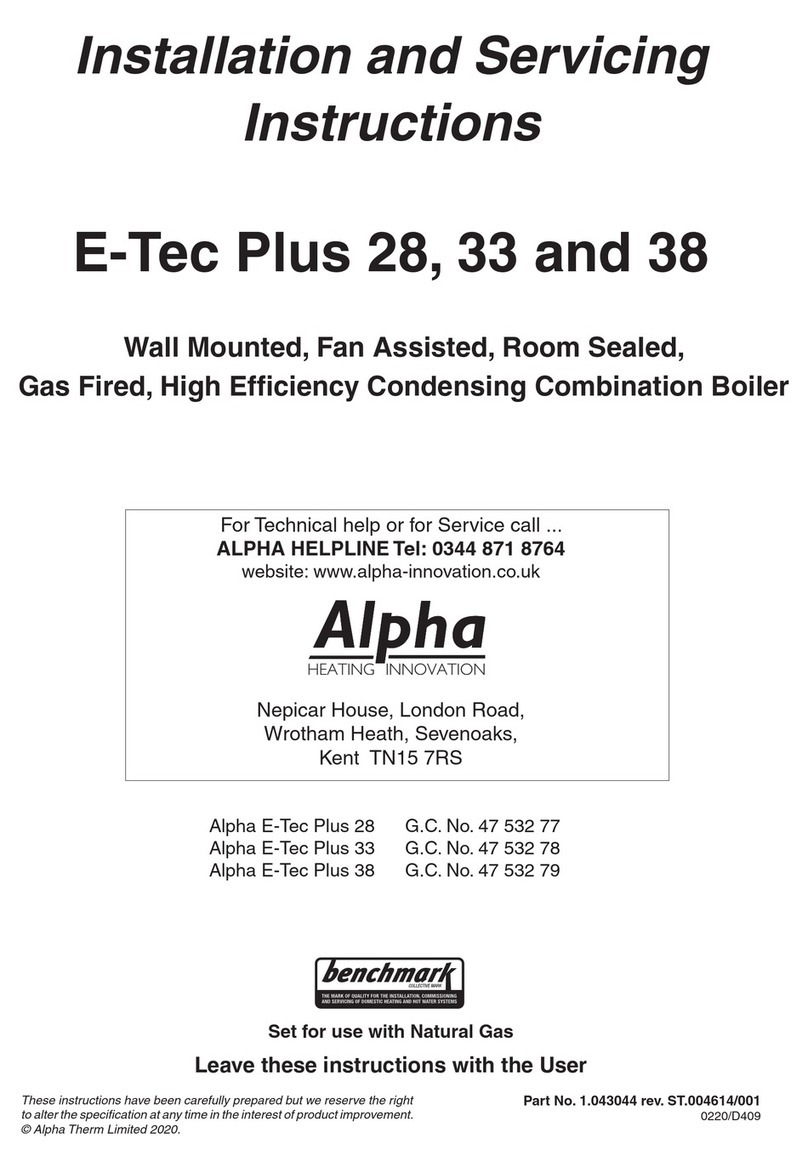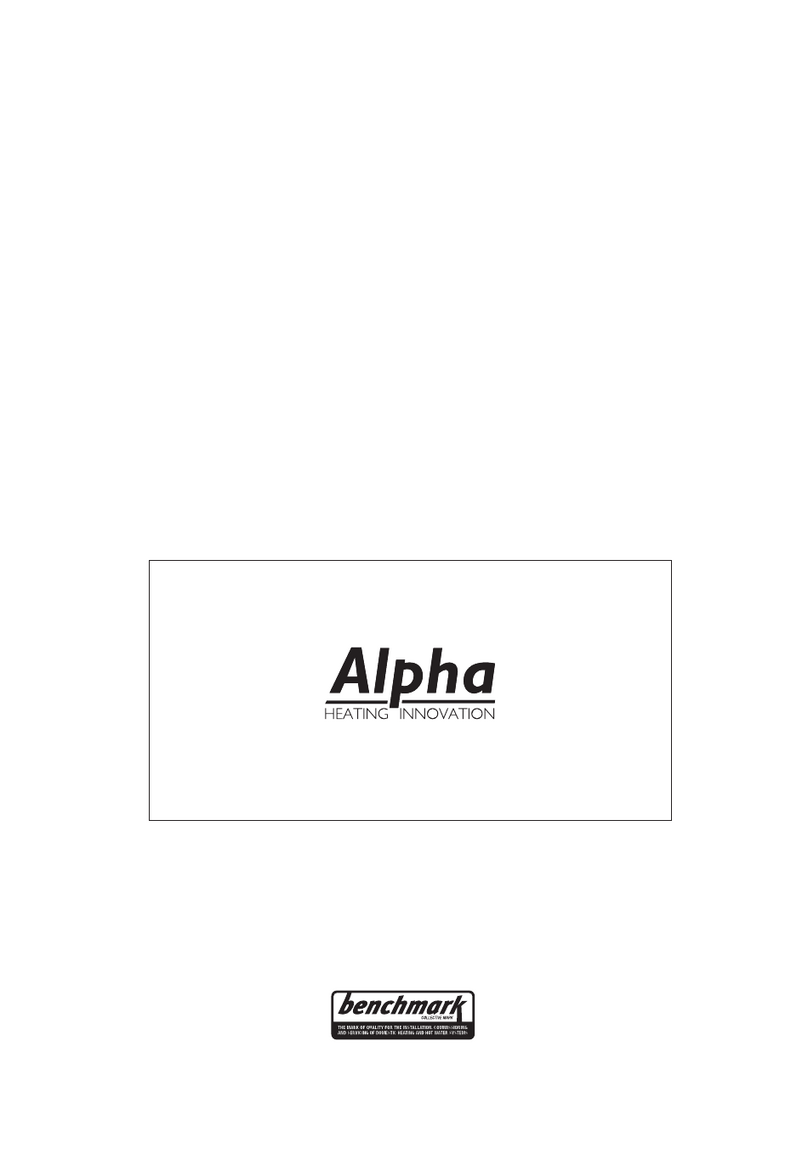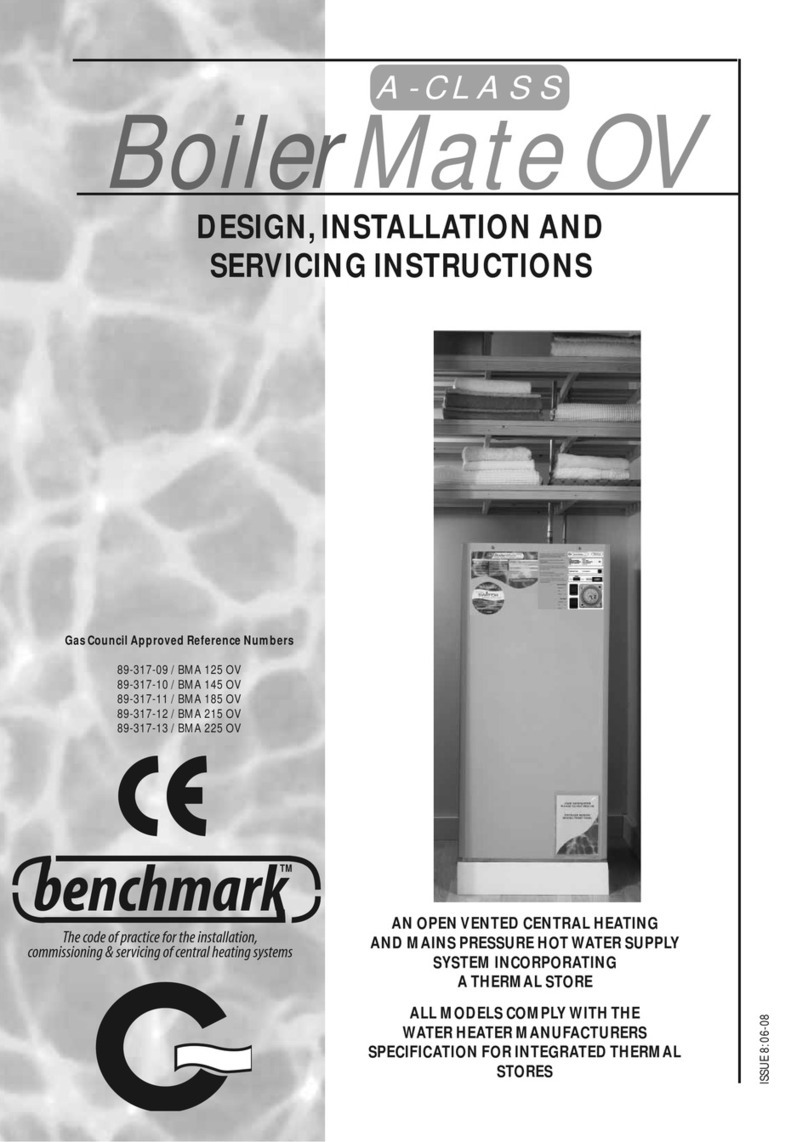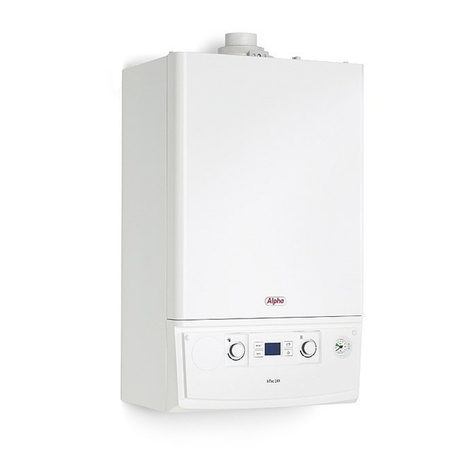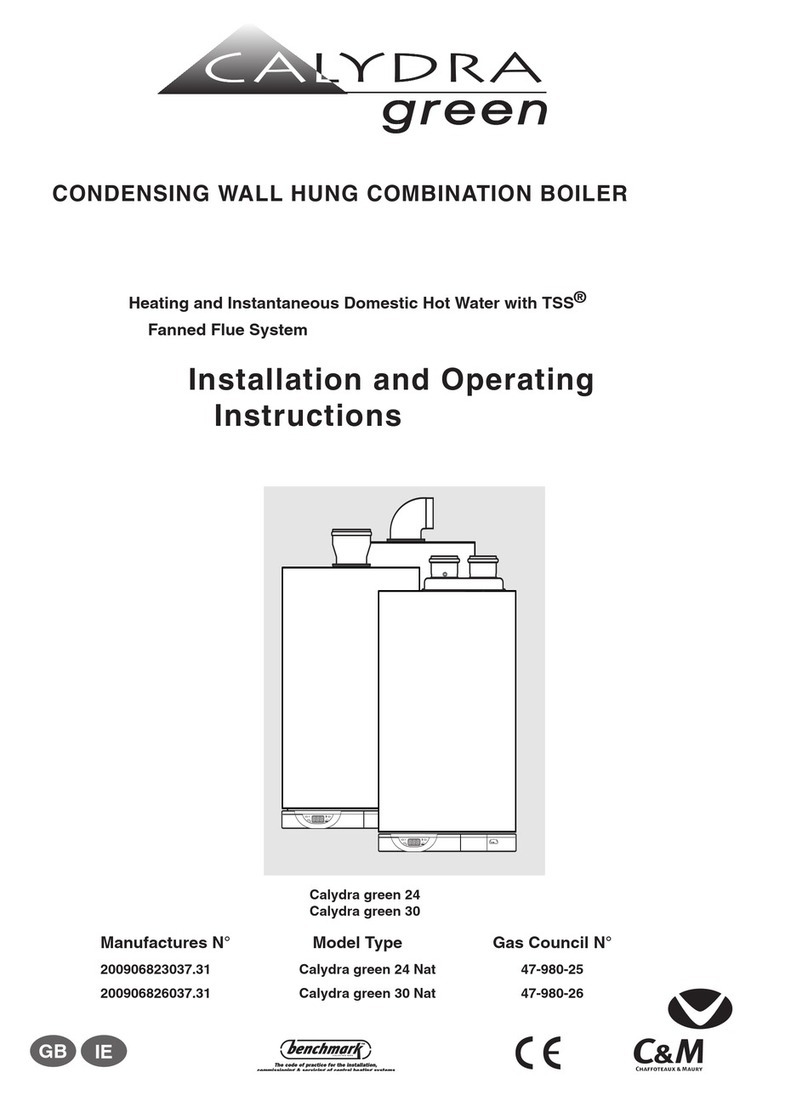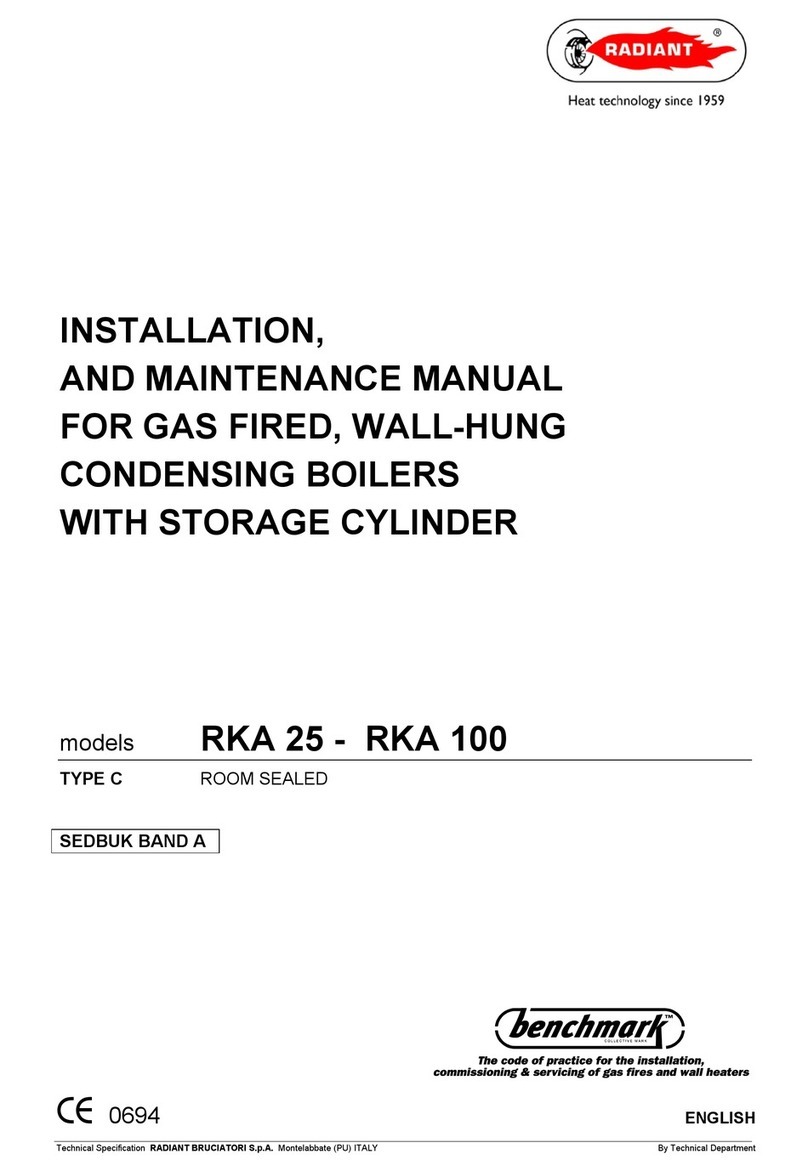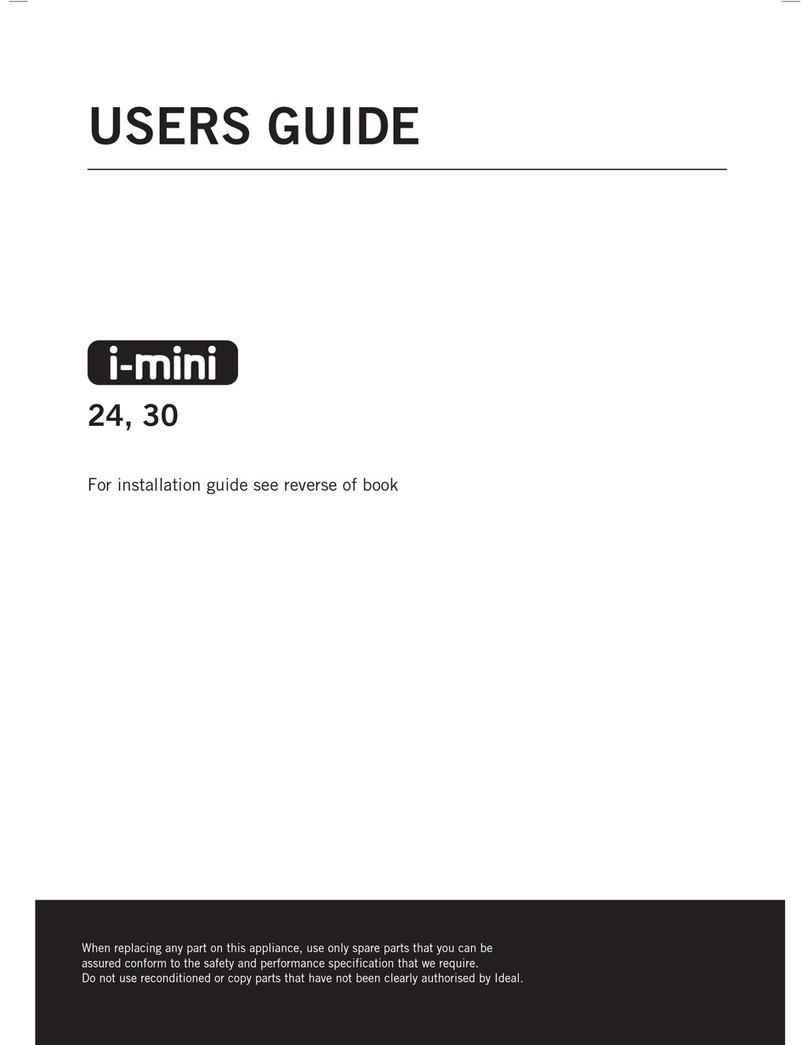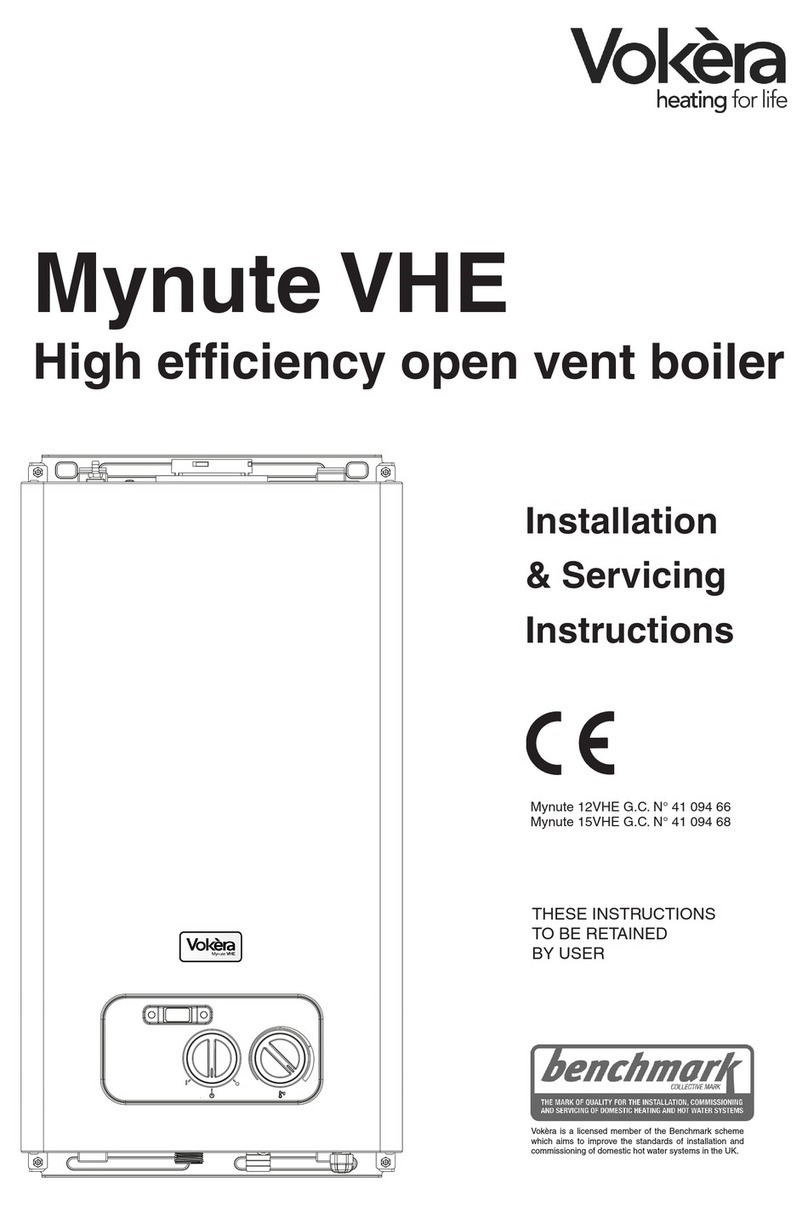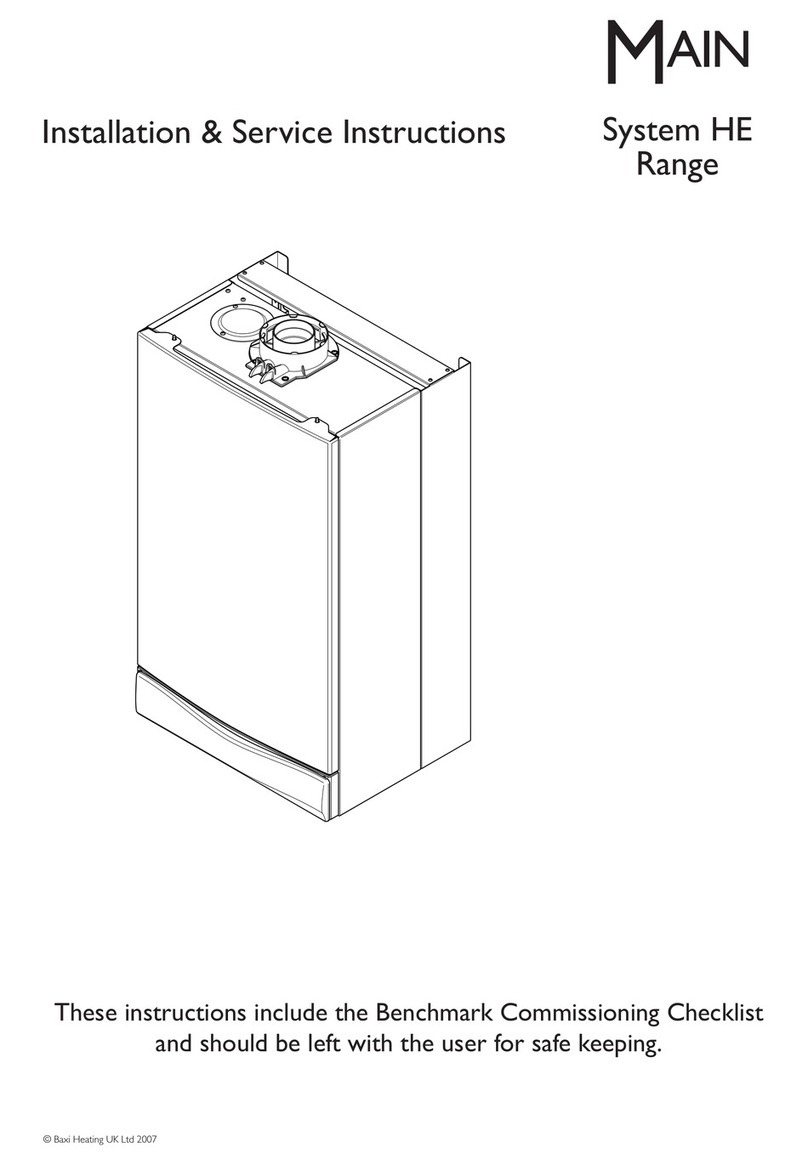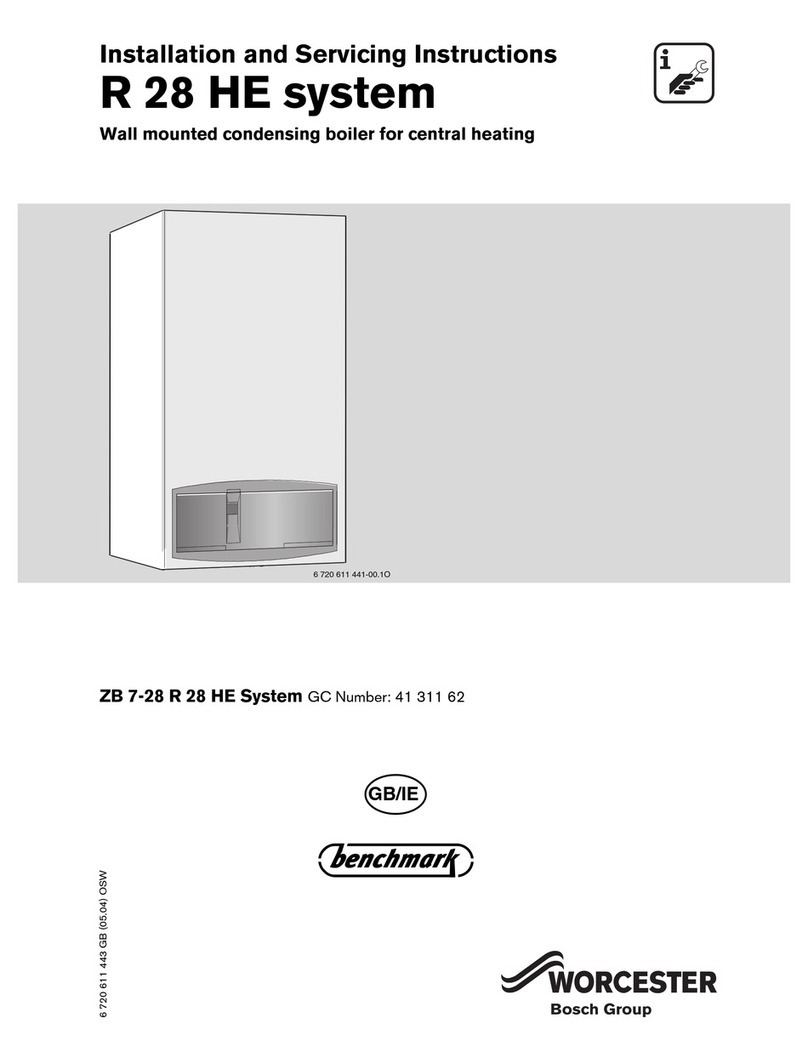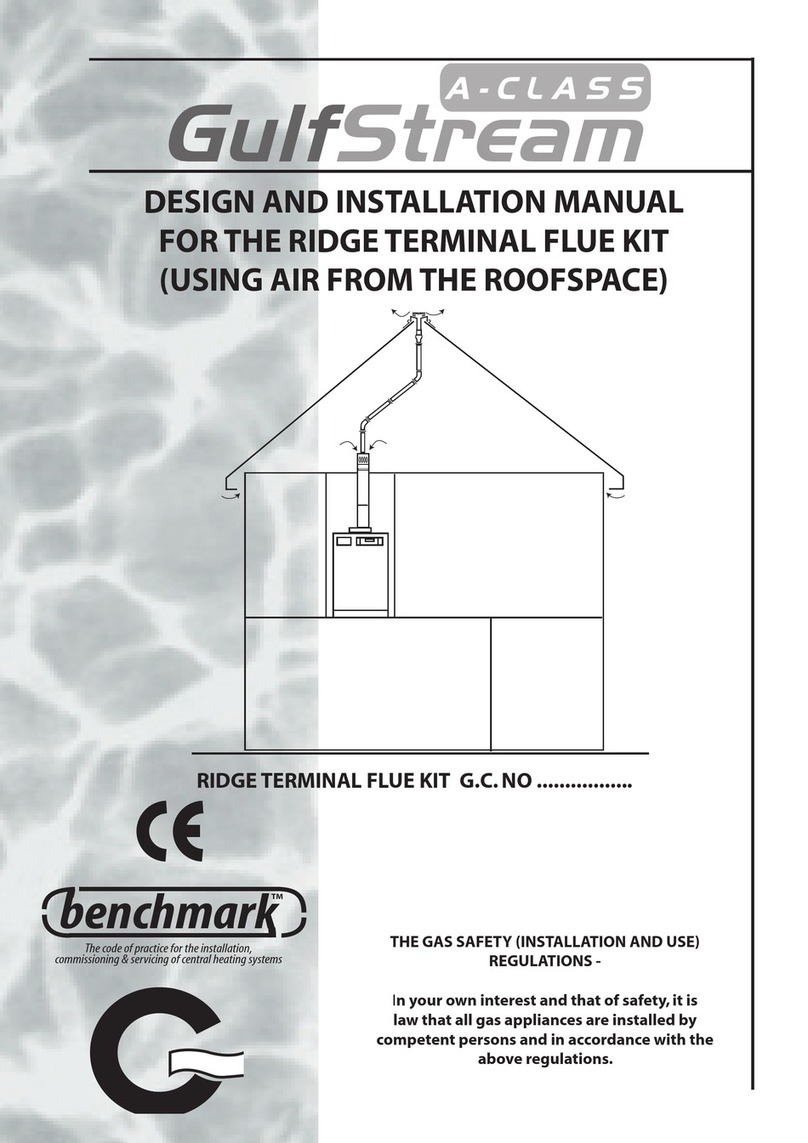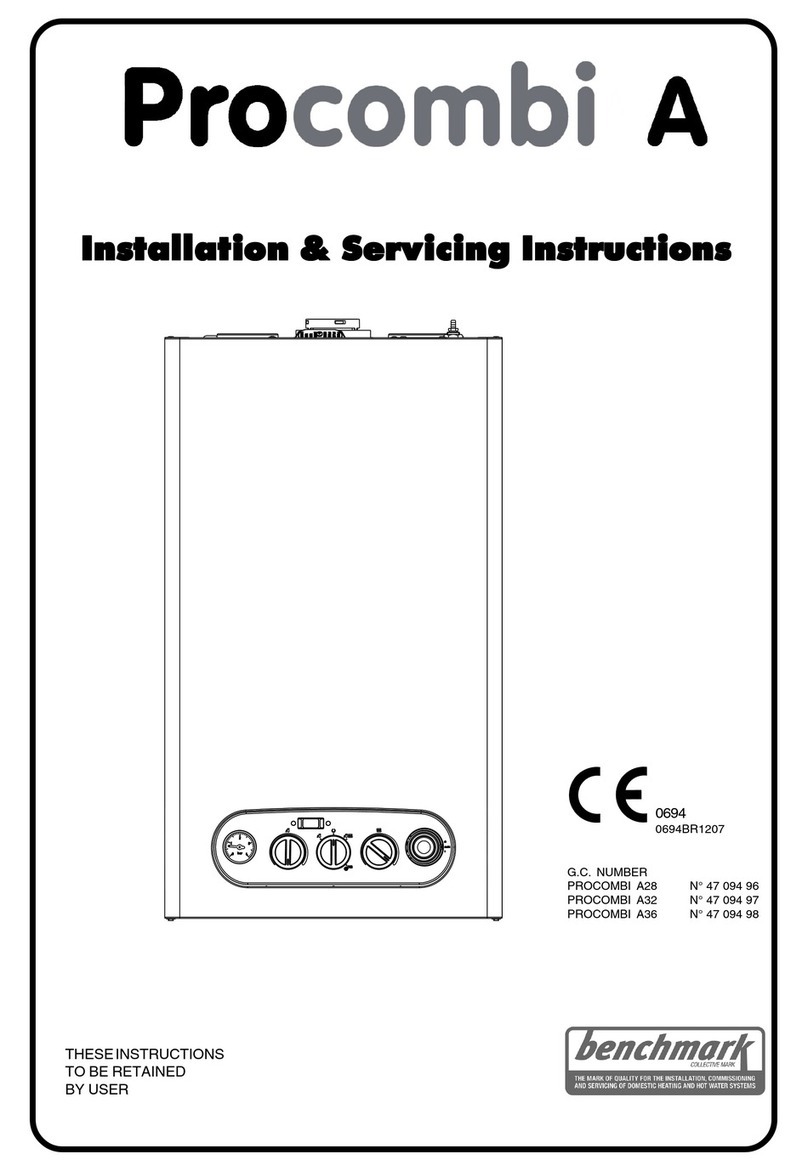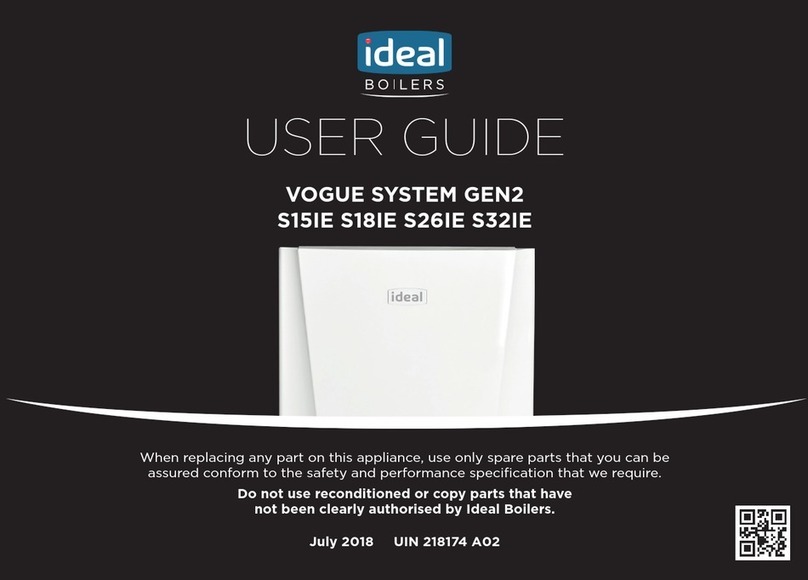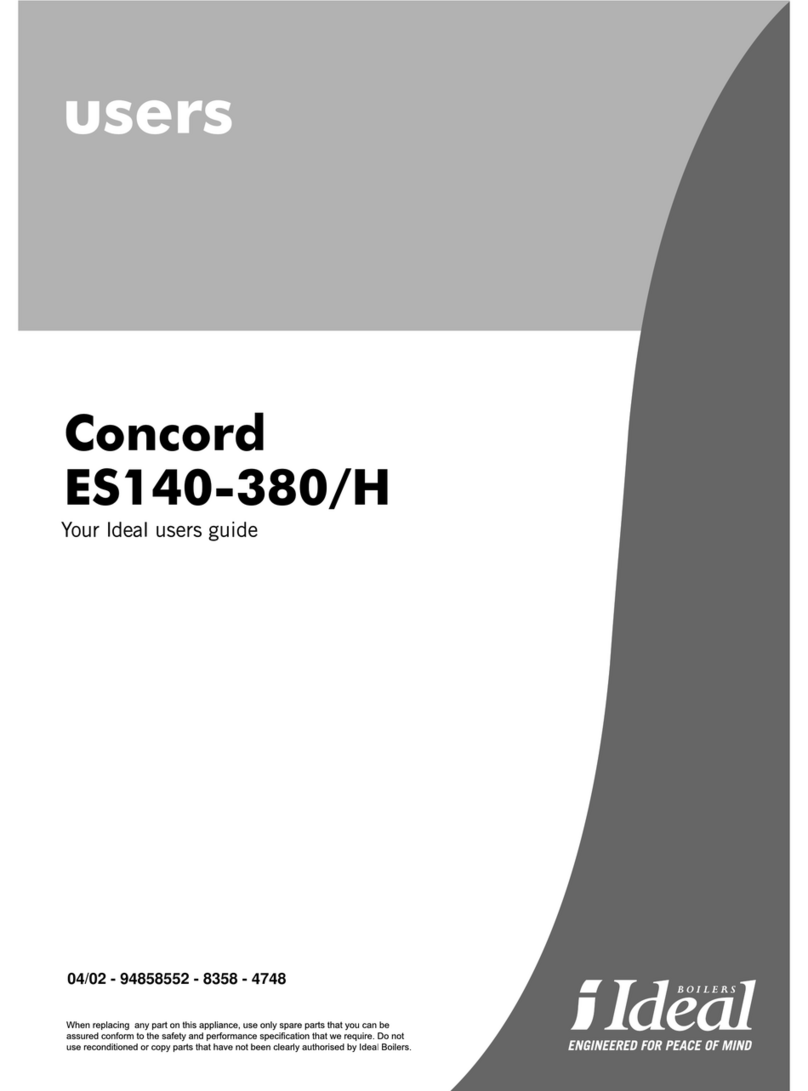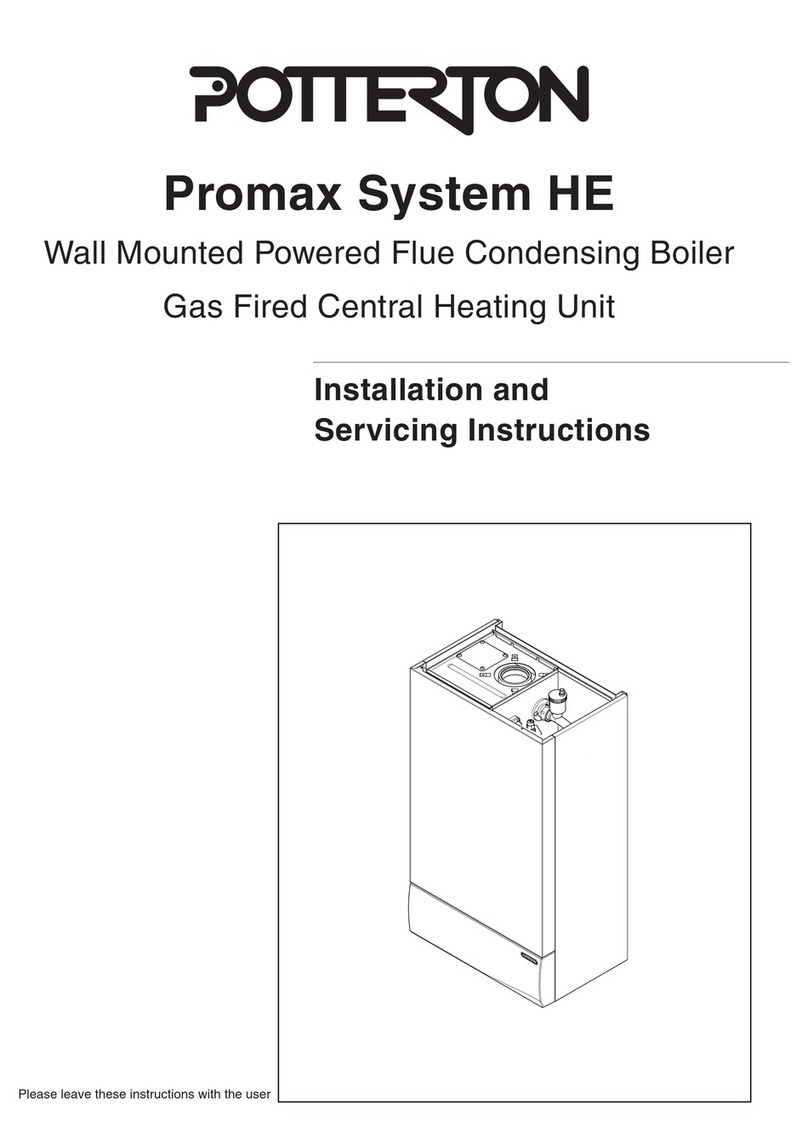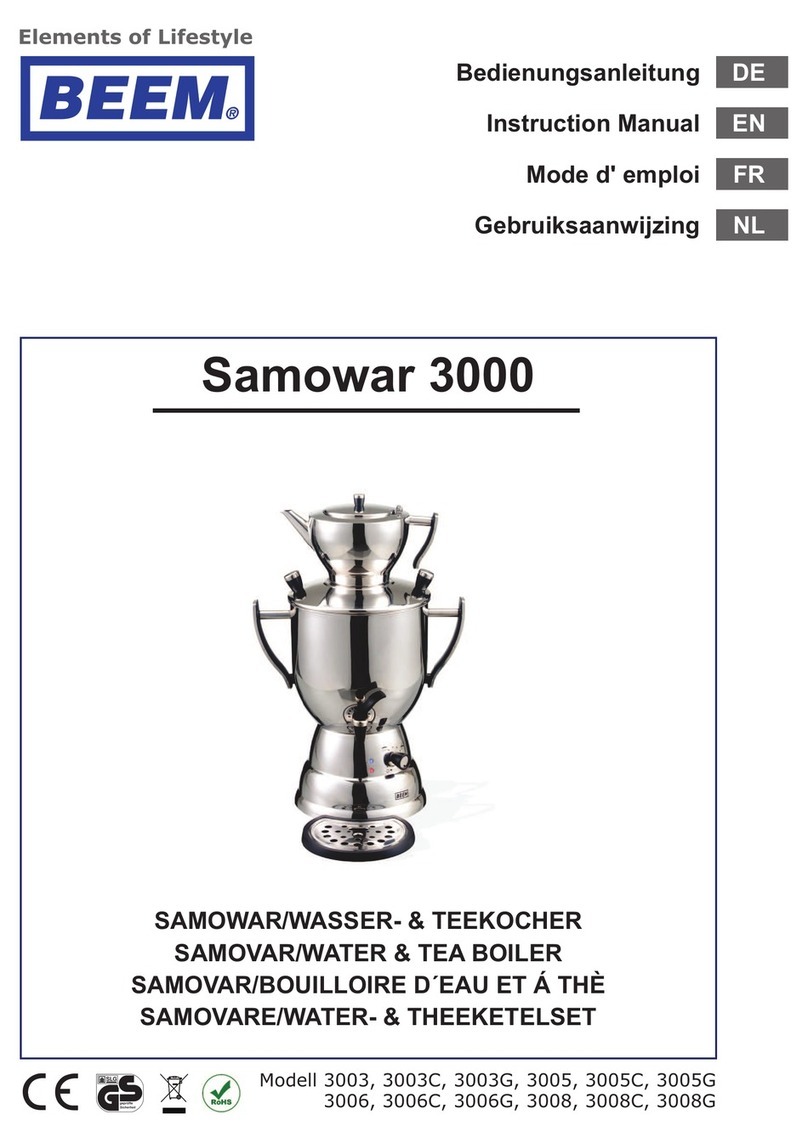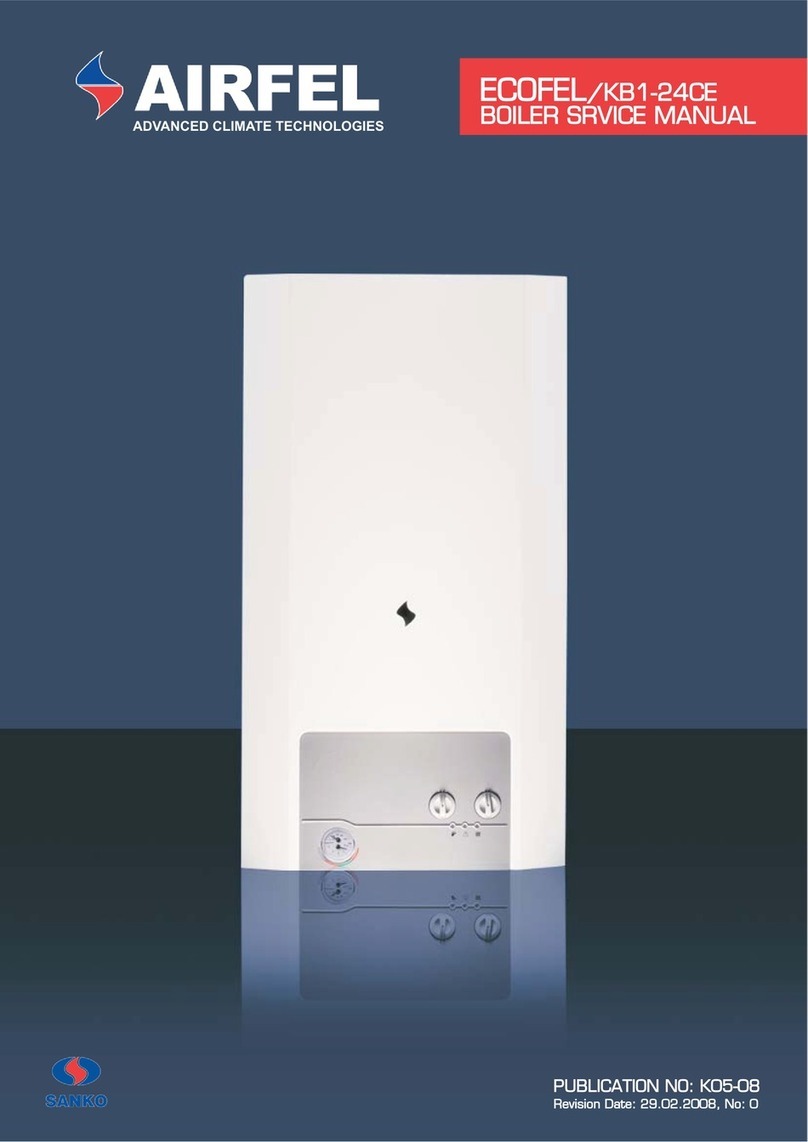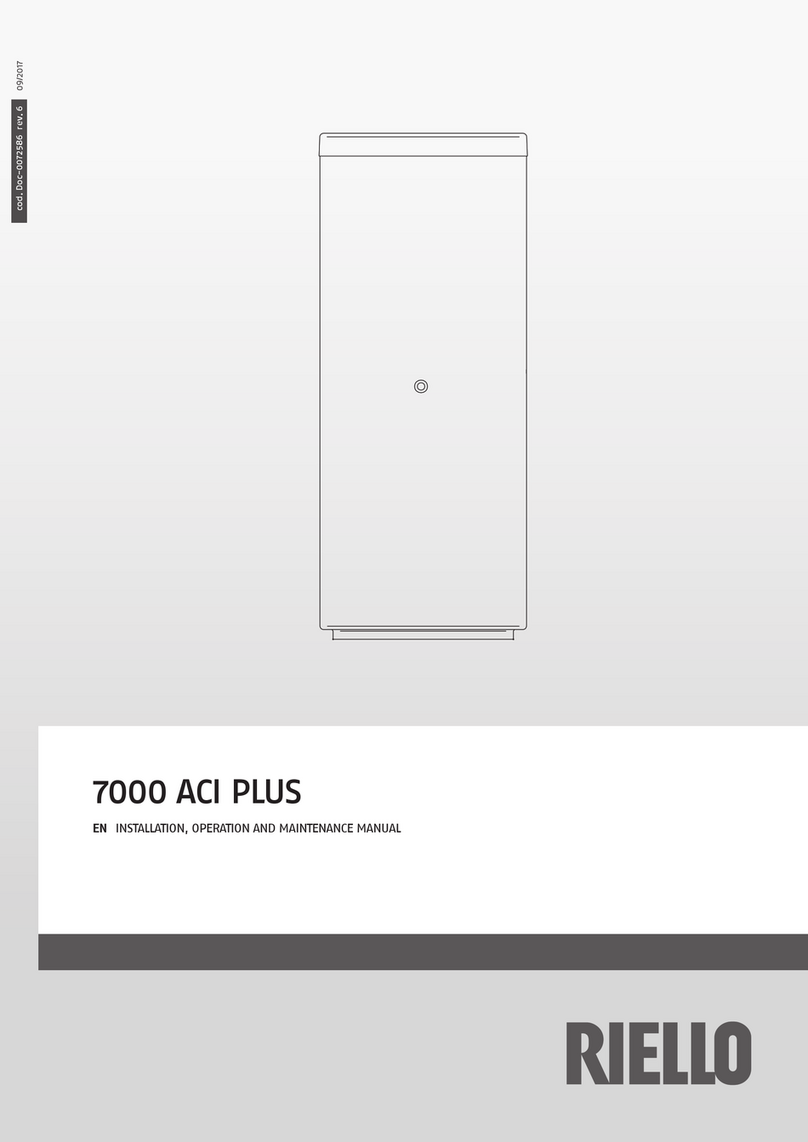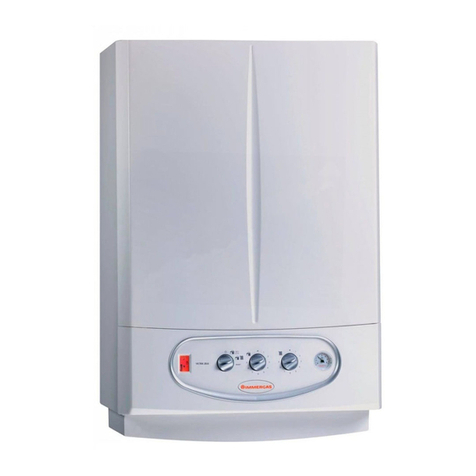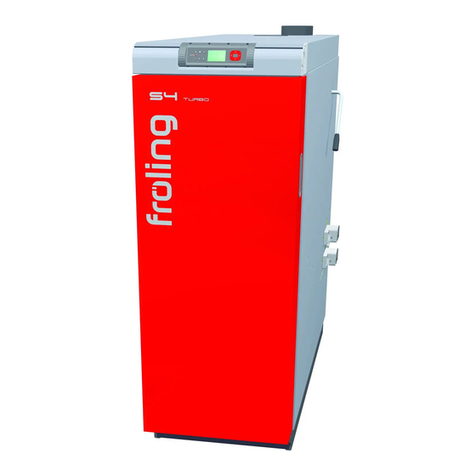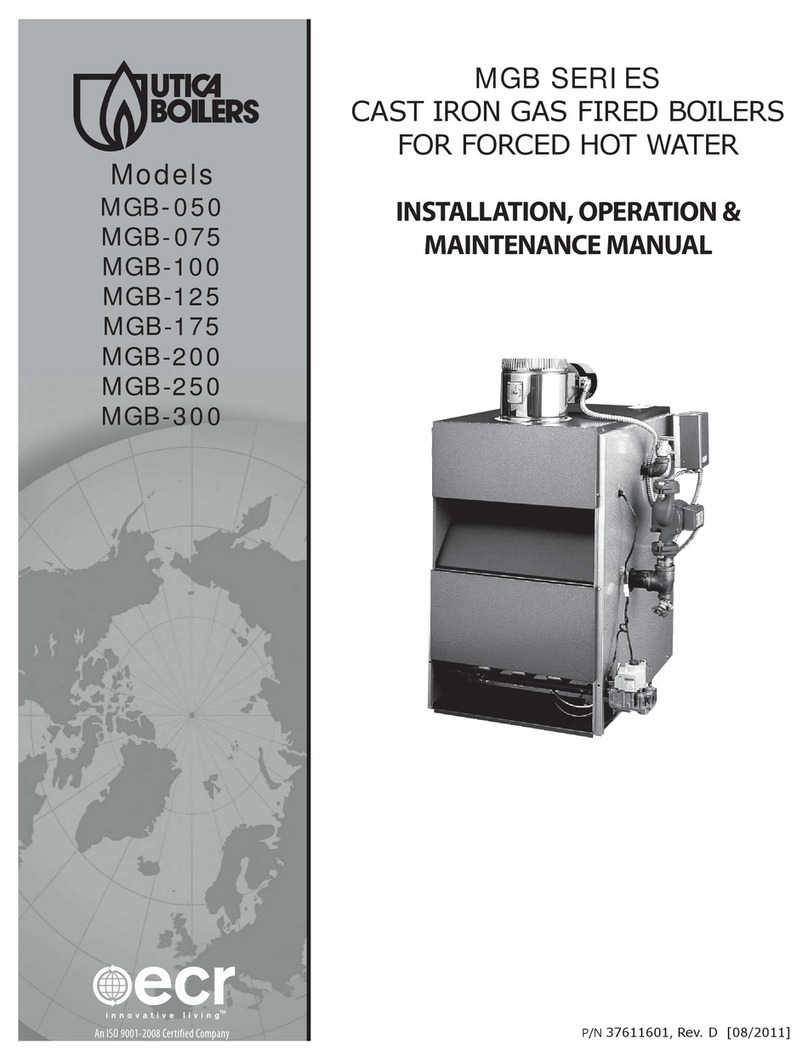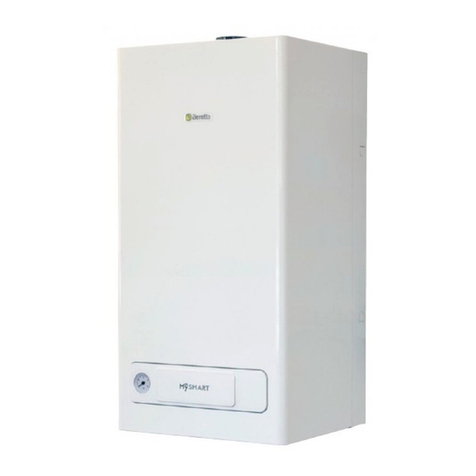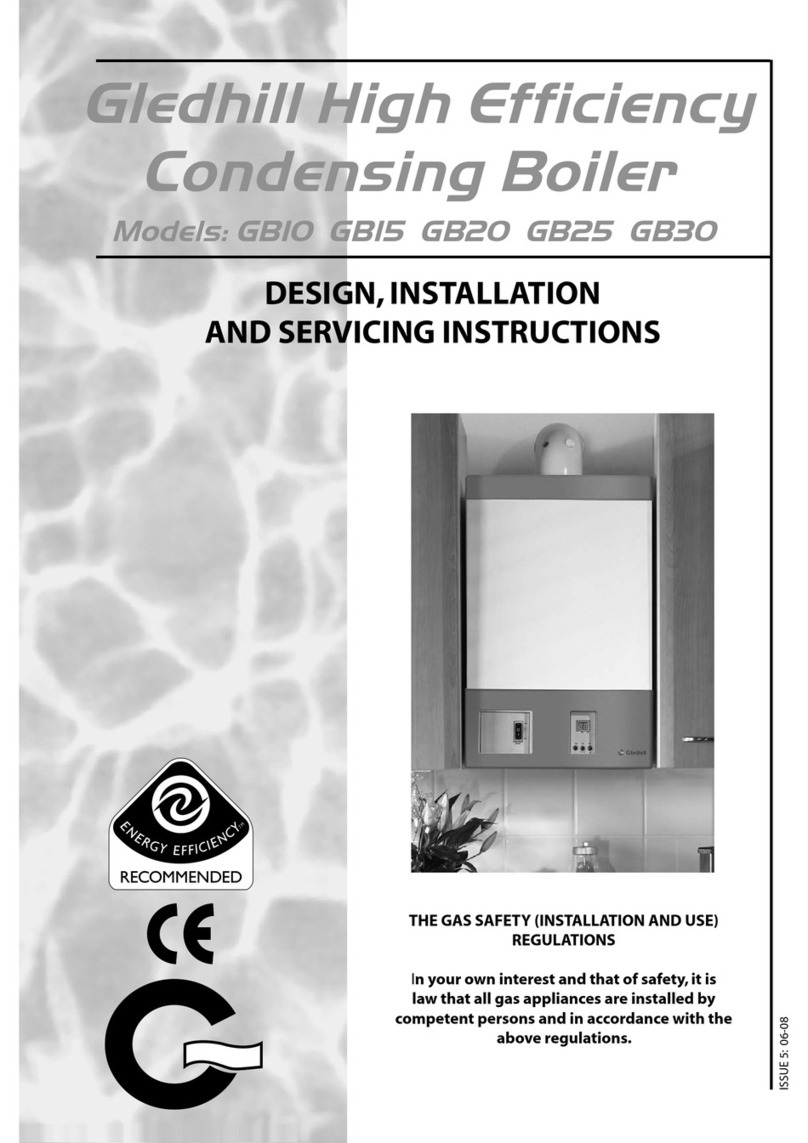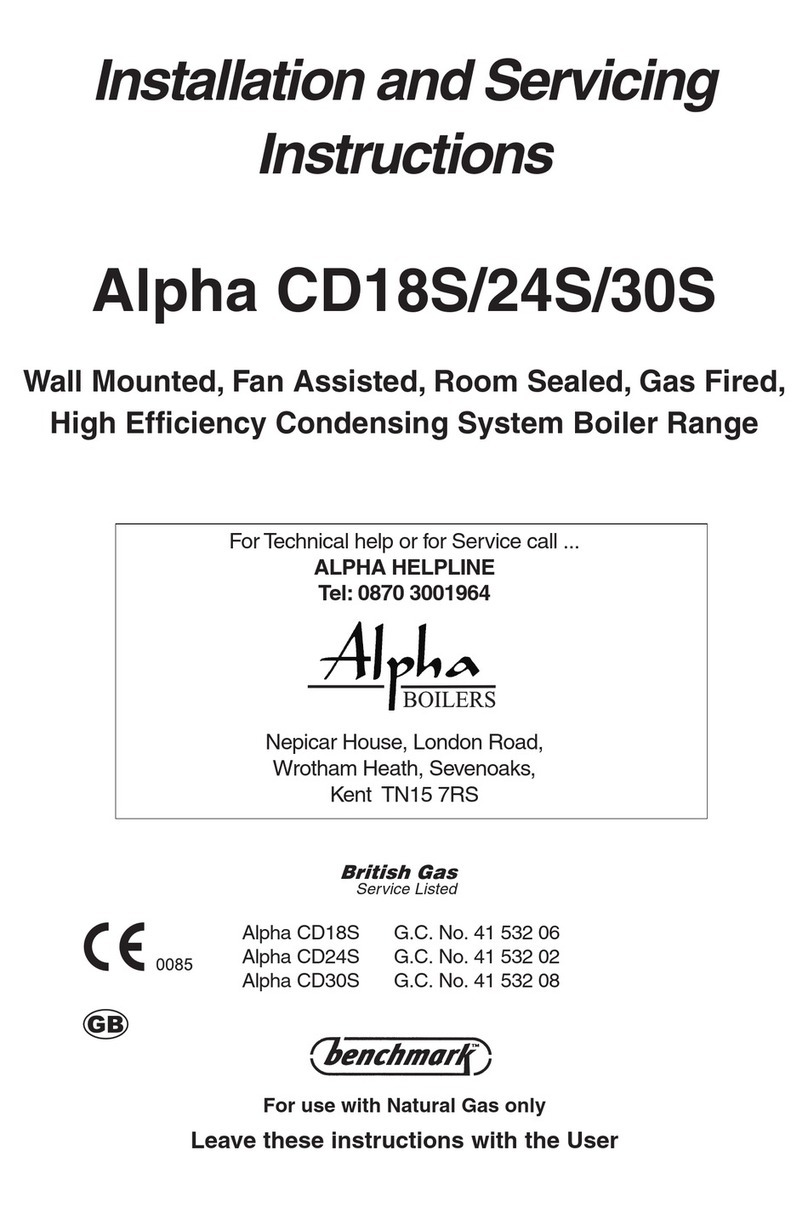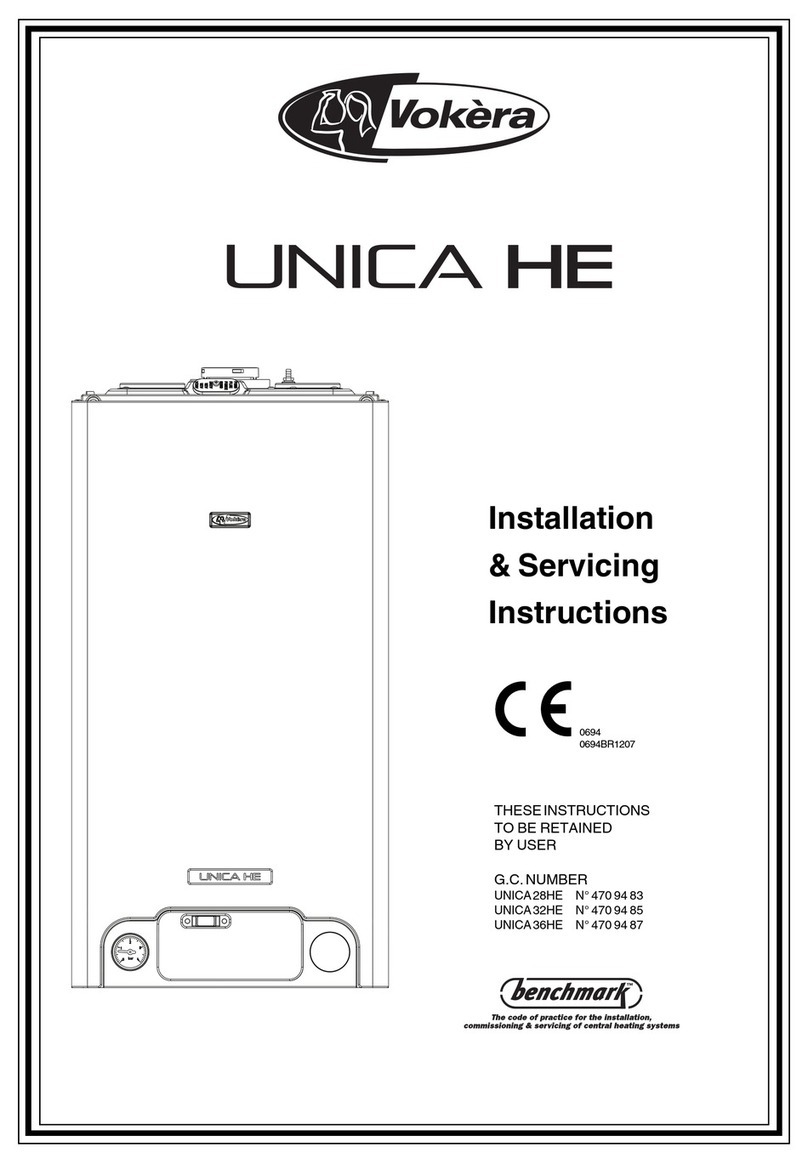
6 720 610 599 GB (03.02)
Installation
11
3 Installation
3.1 Important remarks
BAppliance should only be installed in sealed central
heating systems.
BTo avoid gas ormation in the system, galvanised
radiators or pipes must not be used.
BI a room thermostat is used: do not it a thermostatic
radiator valve on the radiator in the primary room.
BAdd a suitable anti- reeze luid compatible with alu-
minium to the water in the central heating system.
Suitable products are available rom Betz-Dearborn
Tel.: 0151 4209563 and Fernox Tel.: 01799
550811.
BIn our experience, the addition o sealing agents to
the water in the central heating system can cause
problems (deposits in the heat exchanger). For that
reason we advise against their use.
3.2 Domestic hot water
Any regulations speci ied by the local water company
must be observed.
The inal 600 mm o the mains cold water connection to
the applaince should be made in copper tube only.
The appliance is suitable or a mains supply having a
maximum pressure o 10 bar. A pressure reducing valve
must be itted, i necessary.
The hot water outlet temperature is set to be capable o
achieving a maximum o 60˚C. The maximum tempera-
ture and the requency o the recharge o the heat store
may be reset.
A water low rate o 10.6 l/min will give a temperature
rise o 40˚C. I a higher rise is required then the low
must be reduced at the tap and the discharge temper-
ature will rise up to the maximum set igure.
The temperature rise, upto the maximum set by the user,
is automatically maintained by the modulation o the
heat input. In winter, when the mains temperature is
very low, the water low, adjusted at the tap or shower,
should be reduced to maintain the required delivery
temperature.
It is suggested that long pipe runs to taps or showers
be insulated to prevent the rapid cooling o the water.
All types o single lever mixer taps and thermostatic
mixer units suitable or a mains pressure o up to 10 bar
can be used.
The head o a loose-head shower must not be allowed
to all within 25 mm o the top the bath to prevent the
risk o water being drawn back into the mains. Alterna-
tively the shower must be itted with an anti-syphonage
device at the point o the lexible hose connections.
Over-rim bidets may be connected to the appliance
provided that it is in accordance with the requirements
o the local water company. The outlet(s) should be
shrouded and unable to have any temporary hand held
spray attached. No anti-syphonage arrangements are
necessary.
In exceptionally hard water areas a device to prevent
scale ormation may be itted or, alternatively, the maxi-
mum temperature reset to about 45˚C which may
reduce the risk o scale ormation. The installation o a
scale inhibitor assembly should be in accordance with
the requirements o the local water company. Arti icially
so tened water must not be used to ill the central heat-
ing system. An isolating valve should be itted to allow
or servicing.
Devices, such as water meters or back-flow pre-
vention valves, capable of preventing the flow of
expansion water must not be fitted unless sepa-
rate arrangements have been made.
A Zilmet Z160 expansion vessel is the pre erred type. A
thread sealant compatible with potable water must be
used. The vessel should be connected into the cold
water mains inlet pipe as close as possible to the appli-
ance.
3.3 Sealed s stems
The appliance must not be operated without the system
being ull o water, properly vented and pressurised.
The expansion vessel has a volume o 10 litres and is
charged to a pressure o 0.75 bar.
The water capacity o the system is shown in table 13,
page 28. I a greater capacity is required then an addi-
tional expansion vessel must be itted into the system
return as close to the appliance as possible. The system
pressure can be set up to a maximum o 1.5 bar with 1
bar being the normal setting.
I the system pressure is greater than 2.65 bar when the
appliance is operating at maximum temperature then an
additional expansion vessel must be itted into the sys-
tem return as close to the appliance as possible.
The illing point must be at low level and arranged as
shown in igs. 5 and 6.
The pressure relie valve is set to operate at 3 bar.
There must be no connection to the mains without the
approval o the local water company. All connections in
the system must be capable o withstanding a pressure
o up to 3 bar and the radiator valves con orm to the
requirements o BS 2767:10.
BAlways t rn off the gas cock before car-
rying o t any work on components
which carry gas.
iFixing of the appliance, gas and fl e con-
nections, commissioning of the system
and electrical connections may only be
carried o t by competent persons a thor-
ised by CORGI.





















